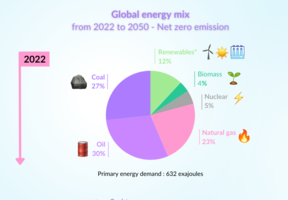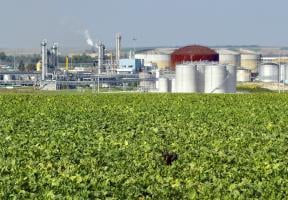Incineration - The Heating Power of Refuse
5 min read
is not only a way to get rid of waste, it’s also a way of generating energy. Many different types of waste, whether from households, industry or agriculture, can be converted into or .

© AFP - This waste incineration plant in Issy-les-Moulineaux, France produces enough heat for 5,000 homes in the western suburbs of Paris.
Harnessing Heat and Power Potential
Excluding all types of , about 70% of our waste is combustible. That includes paper, cardboard, waste, textiles, plastics and more. In addition to households, many industries produce waste whose value can be captured through . There are many kinds of industrial waste, including residue, tar and used solvents. There are also various kinds of agricultural waste, such as straw from wheat, corn and rice, as well as agro-industrial waste, which mostly comes from sugar and oil mills. Papermaking creates waste, too. After extracting cellulose from wood to make pulp, pulp mills burn the by-product known as “black liquor.”
By exploiting its potential to recover energy from waste, Europe could provide 17 million homes with and 24 million with heat. Denmark is currently the European champion in terms of per capita power and heat production.
Incineration Plants
Incineration is first and foremost a way of eliminating a sizable amount of our waste. Some 90% of its initial volume goes up in smoke. This represents a healthier solution than the huge landfills of the past. In France, direct dumping of recyclable or recoverable waste has been prohibited since July 2002. In addition to getting rid of refuse, incineration allows us to produce energy from waste.
An incineration plant includes a furnace and a post-combustion chamber. The waste is burned in the furnace in a process called , which produces combustible gases. These are burned in the post-combustion chamber at temperatures of 800 to 900°C. A heat exchanger — in which very hot water or superheated steam circulates — is used to recover energy from the flue gas emitted.
About 5 to 7 tons of waste is needed to produce the equivalent of one ton of oil. For example, the energy produced in the three Paris-region incineration plants operated by Syctom is enough to heat 300,000 homes a year.
How Energy Efficient is Incineration?
Two types of energy are produced in an incineration plant: heat and power. Each type has its own production process and level of .
-
Heat production: This involves simply heating water through waste combustion. This process is energy efficient, with 70 to 80% of the combustion heat recovered after incineration, or about 1,500 kWh of thermal energy per ton of refuse. Of course, the heat produced then has to be used somewhere near the incineration plant.
-
Power production: The heat exchanger has to contain steam at the highest possible pressure. This steam is sent to a turbine that drives an electric generator. The power produced can be supplied to the grid all year round. The energy efficiency of this process is about 20 to 25% (300 to 400 kWh).
A better solution to producing just heat or just power through incineration is producing both simultaneously through , also known as combined heat and power (CHP). This involves using the residual heat in the exhaust steam from the power-generating turbine. With this process, energy efficiency improves to 50 to 60%.
It is estimated that by recovering 50% of all municipal waste in France, about 1% of the country’s energy consumption needs could be met. This solution is therefore very far from adequate.
Moreover, the flue gas from incinerating waste is highly toxic. The resulting gas must therefore be scrubbed and neutralized (because of its acidity) before being released. Air pollution around incineration plants is particularly high.



















